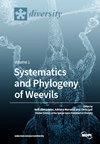潜入多样性:桡足类甲壳类动物在十月珊瑚协会
IF 2.1
3区 生物学
Q2 BIODIVERSITY CONSERVATION
引用次数: 0
摘要
本研究对桡足类甲壳类动物的生物多样性和分布模式进行了广泛的分析。从1858年至2023年间发表的92篇科学论文中收集了233种桡足动物的966条记录,包括3目18科54属,并作为GBIF的开放数据更新。这些桡足类动物与八珊瑚28科72属183种亲缘关系密切。结果表明,桡足类(Cyclopoida、Harpacticoida和Siphonostomatoida)与多种八爪珊瑚之间存在393种不同的种间关联。这些关联中约有60%仅在文献中报道过一次,这对评估与八爪珊瑚相关的大多数桡足类物种的宿主特异性水平提出了挑战。值得注意的是,超过91%的记录桡足类物种是在不超过30米的深度发现的,只有4种桡足类物种在超过500米的深度被报道。这些共生桡足类动物的存在被记录在215个采样点,位于12个确定的海洋生态区中的8个,特别关注西部印度太平洋、中部印度太平洋和温带北部地区。尽管对现有数据进行了全面的检查,但本研究强调了我们对桡足类甲壳类动物多样性和与八爪珊瑚相关的分布的理解存在实质性差距。此外,关于共生桡足类的关键信息在大约94%的潜在八珊瑚宿主物种中明显缺失。这些差异强调了进一步科学研究的迫切需要,以揭示共生关系的复杂性,并有助于更全面地了解桡足动物-八爪珊瑚的关系。本文章由计算机程序翻译,如有差异,请以英文原文为准。
Diving into Diversity: Copepod Crustaceans in Octocoral Associations
This research provides an extensive analysis of the biodiversity and distribution patterns of copepod crustaceans associated with octocoral species. A comprehensive dataset comprising 966 records pertaining to 233 copepod species, encompassing 54 genera, 18 families, and 3 orders, was compiled from 92 scientific papers published between 1858 and 2023, and updated as open data to GBIF. These copepods were found to be closely associated with 183 octocoral species, representing 72 genera and 28 families. The analysis revealed a total of 393 distinct interspecific associations between copepods, classified under the orders Cyclopoida, Harpacticoida, and Siphonostomatoida, and diverse octocorals. Approximately 60% of these associations were reported only once in the literature, which poses challenges to assessing the level of host specificity among the majority of copepod species linked with octocorals. Notably, over 91% of the recorded copepod species were found at depths not exceeding 30 m, with only four copepod species reported at greater depths surpassing 500 m. The presence of these symbiotic copepods was documented across 215 sampling sites situated within 8 of the 12 defined marine ecoregions, with particular attention to the Western Indo-Pacific, Central Indo-Pacific, and Temperate Northern regions. Despite the comprehensive examination of available data, this study highlights substantial gaps in our comprehension of copepod crustacean diversity and distribution in association with octocorals. Moreover, crucial information concerning symbiotic copepods is conspicuously absent for approximately 94% of potential octocoral host species. These disparities emphasize the imperative need for further scientific inquiry to unveil the intricacies of symbiotic relationships and to contribute to a more holistic understanding of copepod–octocoral associations.
求助全文
通过发布文献求助,成功后即可免费获取论文全文。
去求助
来源期刊

Diversity-Basel
Environmental Science-Ecological Modeling
CiteScore
3.40
自引率
12.50%
发文量
925
审稿时长
11 weeks
期刊介绍:
Diversity (ISSN 1424-2818) is an international and interdisciplinary journal of science concerning diversity concept and application, diversity assessment and diversity preservation. It is focused on organismic and molecular diversity. It publishes reviews, regular research papers and short notes in the regular issues. Related news and announcements are also published. Our aim is to encourage scientists to publish their experimental and theoretical results in as much detail as possible. Therefore, there is no restriction on the length of the papers. Full experimental details must be provided so that the results can be reproduced.
 求助内容:
求助内容: 应助结果提醒方式:
应助结果提醒方式:


